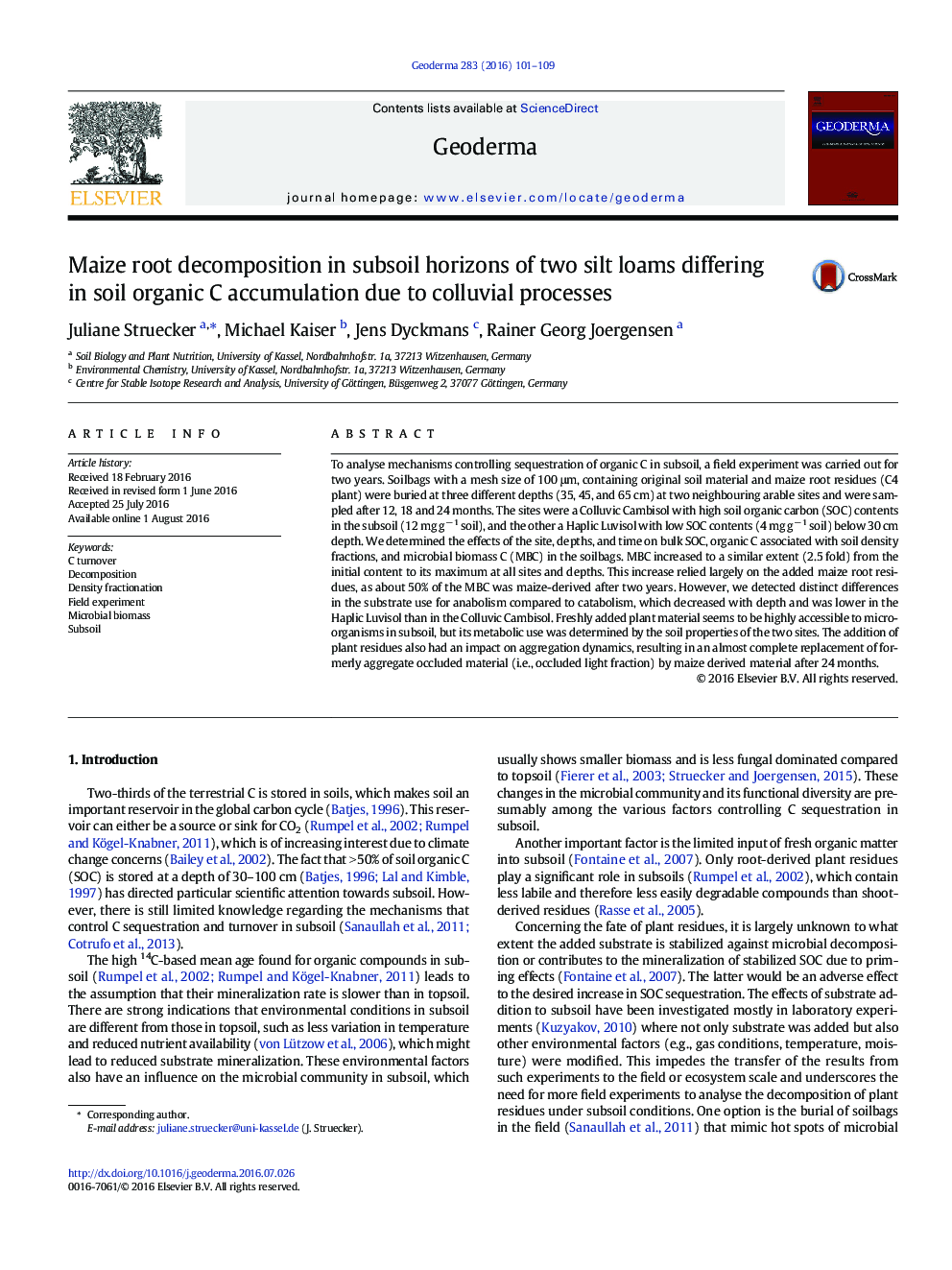| Article ID | Journal | Published Year | Pages | File Type |
|---|---|---|---|---|
| 4572854 | Geoderma | 2016 | 9 Pages |
•Field experiment to investigate substrate decomposition in subsoil•Two depth profiles differing in autochthonous resource stocks•Microorganisms in subsoil degrade the added maize roots irrespective of the depth.•Differences in microbial substrate use depend on autochthonous resources.•Due to accelerated aggregation, formerly occluded material is replaced.
To analyse mechanisms controlling sequestration of organic C in subsoil, a field experiment was carried out for two years. Soilbags with a mesh size of 100 μm, containing original soil material and maize root residues (C4 plant) were buried at three different depths (35, 45, and 65 cm) at two neighbouring arable sites and were sampled after 12, 18 and 24 months. The sites were a Colluvic Cambisol with high soil organic carbon (SOC) contents in the subsoil (12 mg g− 1 soil), and the other a Haplic Luvisol with low SOC contents (4 mg g− 1 soil) below 30 cm depth. We determined the effects of the site, depths, and time on bulk SOC, organic C associated with soil density fractions, and microbial biomass C (MBC) in the soilbags. MBC increased to a similar extent (2.5 fold) from the initial content to its maximum at all sites and depths. This increase relied largely on the added maize root residues, as about 50% of the MBC was maize-derived after two years. However, we detected distinct differences in the substrate use for anabolism compared to catabolism, which decreased with depth and was lower in the Haplic Luvisol than in the Colluvic Cambisol. Freshly added plant material seems to be highly accessible to microorganisms in subsoil, but its metabolic use was determined by the soil properties of the two sites. The addition of plant residues also had an impact on aggregation dynamics, resulting in an almost complete replacement of formerly aggregate occluded material (i.e., occluded light fraction) by maize derived material after 24 months.
